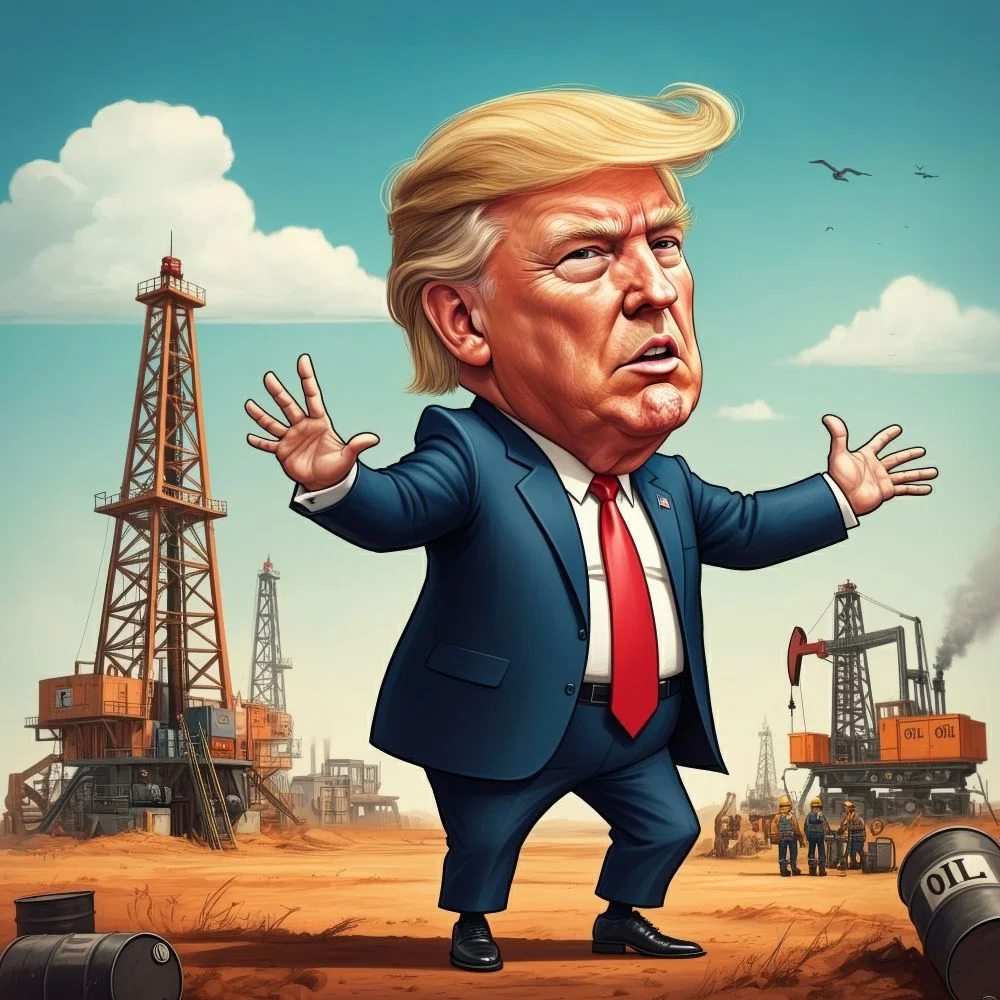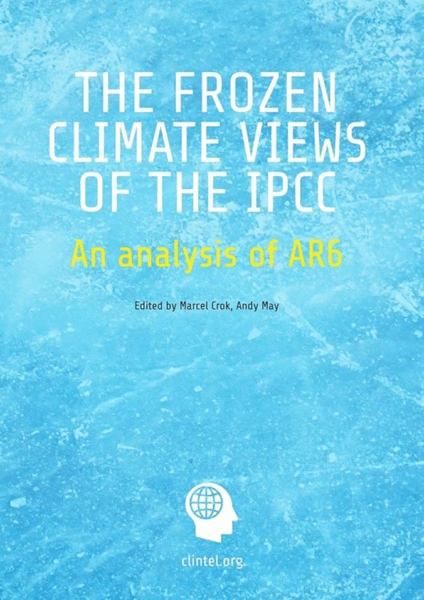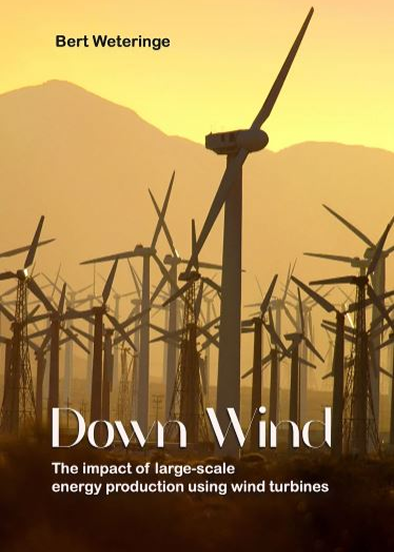In 100 days, Trump rewrote the global energy map
Donald Trump promised to end the war in Ukraine in a single day, but he has failed to do so; he has also failed with his tariff policy. It is therefore easy for his many opponents in Europe to ridicule him. But they are silent on one of his successes. In 100 days, he has changed the climate. But not in the way you might think. The President has overturned the climate dogmas dominating U.S. energy policy.

Source: By Samuel Furfari, first published at the European Conservative
Clintel Foundation
Date: 15 May 2025
In just three months, he has redefined the trajectory of energy policy, both domestically and internationally. This change does not affect the atmospheric climate, but rather the ideological climate that has been shaped by three decades of restrictive and often unrealistic climate policies. Under the banner of ‘energy pride’, Trump has disrupted the established order by adopting pro-fossil fuel policies while dismantling the ‘green’ policies of his predecessor, Joe Biden. This shift marks a turning point in the management of America’s energy resources and in the geopolitics of global energy. Let us examine the key elements of this strategy and its implications for many countries and, more generally, for the EU.
Withdrawing from the Paris Agreement again
Trump’s first symbolic act to assert his new energy policy was to withdraw the United States from the Paris Agreement on decarbonisation. This withdrawal, launched during his first term, was confirmed on returning to the White House. Trump considers the agreement to be an attack on the economic sovereignty of the United States, a kind of ‘new green scam’ aimed at penalising industrialised countries to the benefit of players such as China and India. This decision sends a clear message: the United States will no longer submit to international climate policies that it considers harmful to its economic and energy competitiveness.
In fact, Donald Trump not only withdrew the United States from the Paris Agreement, but also undertook a complete overhaul of energy policy, refocusing priorities on fossil fuels, reviving the neglected ‘clean coal’ sector, and opposing both international and state initiatives, such as those in California, that are stifling US energy development. This controversial position aims to restore American competitiveness and energy security.
This is not just a defensive posture. Trump has also launched a frontal attack on anti-fossil fuel policies, calling them ‘harmful and dangerous’. Trump says this vision ignores the global economy’s real energy needs.
Energy Dominance
One of the pillars of this strategy is the massive reduction of subsidies and public funding for renewable energy projects. The Trump administration, led initially by Elon Musk, has proposed cutting nearly $10 billion in funding for the development of technologies such as the utopia of green hydrogen, carbon capture and utilisation (CCUS) and energy storage. These cuts call into question iconic partnerships with giants such as ExxonMobil and Occidental Petroleum, which, as part of their green branding strategy, were willing to invest a small portion of their advertising budgets in these fantasy expenditures.
The EU, on the other hand, continues to promote technologies such as ‘green’ hydrogen, despite the exorbitant cost of producing it by electrolysis. This is especially true given that major investment funds such as BlackRock have decided to stop funding this chemical folly. As I have shown in my book ‘The Hydrogen Illusion’, this path is an energy and economic aberration. You cannot burn hydrogen, a key element in the chemical industry, just to satisfy a climate fad. It’s like burning a Louis Vuitton bag to keep warm: absurd and counterproductive.
The Trump administration also plans to cut 8,500 jobs at the Department of Energy (DOE).
By executive order, the President has instructed the Attorney General to identify all laws, other regulations, and state and local practices that impede the identification, development, location, production, or use of national energy resources that are or may be unconstitutional, preempted by federal law, or otherwise unenforceable. Trump is calling for the removal of all provisions that he claims to address ‘climate change’ or relate to ‘environmental, social and governance’ initiatives, ‘environmental justice’, ‘carbon emissions or greenhouse gases’, and funds for the collection of penalties or carbon taxes. He has launched a diplomatic war against states like California with ‘unachievable limits.’
Trump has also taken bold steps to secure the supply of critical materials needed for modern technologies. In April 2025, he signed an executive order allowing mining to begin in the waters of the US exclusive economic zone. The goal is to collect one billion tonnes of critical materials within ten years, including polymetallic nodules rich in cobalt, nickel, copper and rare earths. The administration believes this initiative could add $300 billion to the US GDP in a decade and create 100,000 jobs. Environmental NGOs oppose this decision, citing marine risks. But for Trump, they represent America’s economic enemies on the strategic issue of overtaking China in critical resources.
The core of Trump’s strategy remains massive political support for fossil fuels. This includes:
- Slashing permitting times for oil and gas projects; Interior Secretary Doug Burgum has promised to issue permits in just 14 days.
- Reviving the clean coal industry with subsidies to modernise existing infrastructure, although it remains to be seen whether this will be possible given that shale gas is cheaper than coal for power generation.
- Increasing liquefied natural gas (LNG) exports, particularly to the EU, to reduce Europe’s dependence on Russian gas.
By becoming a dominant exporter of oil and gas, the United States is strengthening its geopolitical influence. Exporting LNG to Europe, for example, reduces Russia’s influence and strengthens transatlantic alliances.
Opposition to Foreign Regulations
The Trump administration has also launched an offensive against EU regulations. It sees them as a threat to US companies. One example is the Protect USA Act, which prohibits strategic US companies from complying with ESG (environmental, social and governance) requirements imposed by the European Union. This law protects key sectors of the fossil fuel and extractive industries, while asserting the economic sovereignty of the United States.
The focus on the extraction of critical minerals reflects an explicit desire to compete with China, which currently controls much of the global rare earths supply chain. Securing its own resources is essential to ensure the technological independence of the United States.
In this context, the announcement on the 100th day of Donald Trump’s term of office of an agreement between the United States and Ukraine on natural resources crowns this period of strategic decisions, which also highlights the flaws in European policy. This agreement does not concern rare earths, as has been repeatedly and erroneously claimed – these are not found in significant quantities in Ukraine – but a wide range of natural resources, including natural gas, manganese, titanium and graphite. It guarantees Ukraine crucial investments for its development, while allowing the United States to secure supplies outside China’s sphere of influence.
EU risks becoming increasingly marginalised
In just 100 days, Donald Trump has upended the political and geopolitical climate on energy, reversing the climate policies of his predecessors and outlining a clear strategy of energy dominance. This strategy is based on pragmatic logic: securing US energy sovereignty, strengthening its economic competitiveness and using energy as a geopolitical lever. If the EU persists in its ideological climate policy, it risks becoming increasingly marginalised.
The big multinational BP has understood this well. It has just abandoned its green policy, which has led to its underperformance, and has also decided to sack its chief strategy officer, Giulia Chierchia, who was behind the company’s green transition strategy. Her position as head of sustainable development will also be abolished. When will the European Commission cut many of these green jobs, as Donald Trump is doing?
We were expecting a blackout, and it happened…
The Trump administration must have been laughing as it watched the humiliation of anti-nuclear Spain, which invested heavily in solar and wind power. These energy sources have weakened the national electricity grid and beyond, as Portugal and France were also affected. The stability of a grid is ensured by the inertia of large rotating masses such as turbines and alternators in thermal and nuclear power plants. Intermittent and variable renewable energies cannot guarantee this inertia, which is essential to electrical systems.
With low penetration in the energy mix, renewable energies do not pose major problems for the grid, as they benefit from the inertia of conventional equipment, which accounts for the majority of production. However, when their share exceeds 30 to 40%, the risks of instability become very significant. During the blackout on 28 April 2025, they accounted for 75%! These choices raised electricity prices, as excess solar had to be dumped at negative prices. This model, touted as an example to follow (the authorities boasted on 22 April that they were producing 100% renewable electricity), has proved to be a resounding technical and economic failure. It will remain an example that all engineering students will have to study. There is no doubt that the Trump Administration will use this EU failure to further undermine intermittent and variable renewable energy.
As the founding fathers of the European Community said during the Messina Conference in June 1955, ‘There will be no future without abundant and cheap energy.’ Trump has understood this and changed the climate of energy policy. Brussels-Strasbourg has forgotten it.
Samuel Furfari, Ph.D., is a professor of geopolitics of energy at various universities. He is currently teaching at ESCP London and is an honorary professor at the Polytechnic School of the University of Madrid. He taught energy politics and geopolitics at the Université Libre de Bruxelles from 2003 to 2021. He was a senior European civil servant at the European Commission’s DG Energy for 36 years. From 2019 to 2022 he was president of the European Society of Engineers and Industrialists. He is the author of 18 books and numerous articles.
more news
Chill Out: Refrigerants Are No Global Warming Threat
A federal rule mandating the use of certain refrigerants has substantially boosted the price of air conditioning and increased the risk of fire – only to reduce global temperature by an amount too small to measure.
Beyond the Climate Change Consensus
Report from The International Conference of the Hungarian Academy of Sciences, Budapest by Demetris Koutsoyiannis
Past Global Warming More Rapid than Today’s: The Younger Dryas
With clear scientific storytelling, Ralph B. Alexander highlights how the Younger Dryas ended in a burst of natural warming far faster than what we observe today. His article raises compelling questions about the drivers of abrupt climate change in Earth’s history.





